Author: Miao Zheng
Google pretended to be asleep for 8 months, then suddenly dropped a bombshell with Gemini 3 Pro.
Google has finally released Gemini 3 Pro, very suddenly and in a rather “low-key” manner.
Although Google had previously released the image editing model Nano Banana before Gemini 3 Pro, making a brief splash, it had been silent for too long regarding its foundational models.
For the past half year, everyone has been buzzing about OpenAI’s new moves or marveling at Claude’s dominance in the coding field, but no one mentioned Gemini, which hadn’t had a version upgrade for 8 months.
No matter how impressive Google’s cloud business and financial reports are, its presence in the core AI developer community has been gradually diluted.
Fortunately, after experiencing it firsthand, I found that Gemini 3 Pro did not disappoint us.
But it’s still too early to draw conclusions. The current AI race has long passed the stage where parameter count alone is impressive; now, everyone is competing on applications, implementation, and cost.
Whether Google can adapt to the new version and environment remains to be seen.

01
I asked Gemini 3 Pro to describe itself in one sentence, and this was its answer.
“No longer eager to prove how smart I am to the world, but starting to think about how to make myself more useful.” — Gemini 3 Pro
On the LMArena leaderboard, Gemini 3 Pro topped the chart with an Elo score of 1501, setting a new record for comprehensive AI model evaluation. This is an outstanding achievement, even Altman tweeted his congratulations.

In mathematics ability tests, the model achieved 100% accuracy in code execution mode on AIME2025 (American Invitational Mathematics Examination). In the GPQADiamond science knowledge test, Gemini 3 Pro scored 91.9% accuracy.
Test results from the MathArenaApex math competition showed Gemini 3 Pro scored 23.4%, while other mainstream models generally scored below 2%. In another test called Humanity's Last Exam, the model achieved 37.5% without using any tools.
Google introduced a new code generation feature called “vibecoding” in this update. This feature allows users to describe their needs in natural language, and the system then generates the corresponding code and application.
In tests within the Canvas programming environment, after a user described “making an electric fan with adjustable speed,” the system generated complete code—including rotation animation, speed control slider, and switch button—in about 30 seconds.
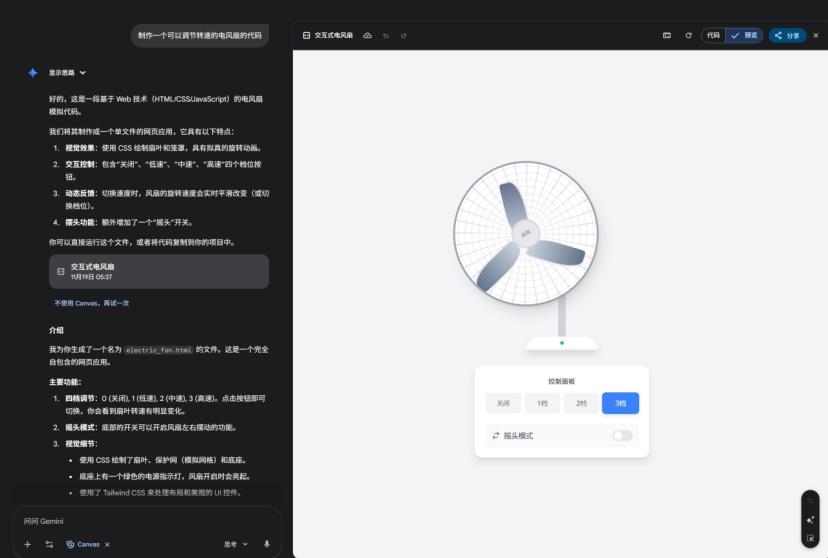
Official demonstrations also included a visual simulation of the nuclear fusion process.
In terms of interaction, Gemini 3 Pro added a “GenerativeUI” feature. Unlike traditional AI assistants that only return text answers, this system can automatically generate customized interface layouts based on the query.
For example, when a user asks about quantum computing, the system may generate an interactive interface with concept explanations, dynamic charts, and links to relevant papers.
For the same question aimed at different audiences, the system generates different interface designs. For instance, when explaining the same concept to children and adults, it uses different presentation styles—cute for children, concise and clear for adults.
The Visual Layout experimental feature in Google Labs demonstrates this kind of interface application, where users can get magazine-style view layouts with images, modules, and adjustable UI elements.
This release also includes an intelligent agent system called Gemini Agent, currently in the experimental stage. The system can perform multi-step tasks and connect to Google services such as Gmail, Google Calendar, and Reminders.
In inbox management scenarios, the system can automatically filter emails, mark priorities, and draft replies. Travel planning is another application scenario: users only need to provide a destination and rough time, and the system will check calendars, search for flights and hotel options, and add itinerary arrangements. This feature is currently only available to Google AI Ultra subscribers in the US.
In multimodal processing, Gemini 3 Pro is built on a sparse mixture-of-experts architecture and supports text, image, audio, and video input. The model’s context window is 1 million tokens, meaning it can handle longer documents or video content.
Mark Humphries, a history professor at Wilfrid Laurier University in Canada, tested the model and found that its character error rate in recognizing 18th-century handwritten manuscripts was 0.56%, a 50% to 70% reduction compared to previous versions.
Google stated that the training data includes public web documents, code, images, audio, and video content, and reinforcement learning techniques were used in the post-training phase.
Google also launched an optimized version called Gemini 3 Deep Think, designed for complex reasoning tasks. This mode is currently undergoing safety evaluation and is planned to be available to Google AI Ultra subscribers in the coming weeks.
In the AI mode of Google Search, users can click the “thinking” tab to view the reasoning process of this mode. Compared to the standard mode, Deep Think performs more steps of analysis before generating answers.
In addition to official information, I also compared Gemini 3 Pro with ChatGPT-5.1.
The first comparison is image generation.
Prompt: Generate an image of iPhone 17 for me
ChatGPT-5.1

Gemini 3 Pro

Subjectively, ChatGPT-5.1 better met my needs, so ChatGPT-5.1 wins this round.
The second comparison is the intelligence level of both agents.
Prompt: Go research the “Alphabet List” WeChat official account and comment on its quality
GPT-5.1

Gemini 3 Pro

Although subjectively I prefer Gemini 3 Pro’s interpretation, it is a bit too flattering, while ChatGPT-5.1 can point out shortcomings, making it more objective and realistic.
The last comparison is coding ability, which is currently the most important area for all large models.
The project I chose is LightRAG, a recent highly starred project on GitHub. It enhances context awareness and efficient information retrieval by integrating graph structures, improving retrieval-augmented generation for higher accuracy and faster response times. Project address
Prompt: Tell me about this project
GPT-5.1

Gemini 3 Pro

At the same time, Gemini 3 Pro has also received high praise from industry professionals.
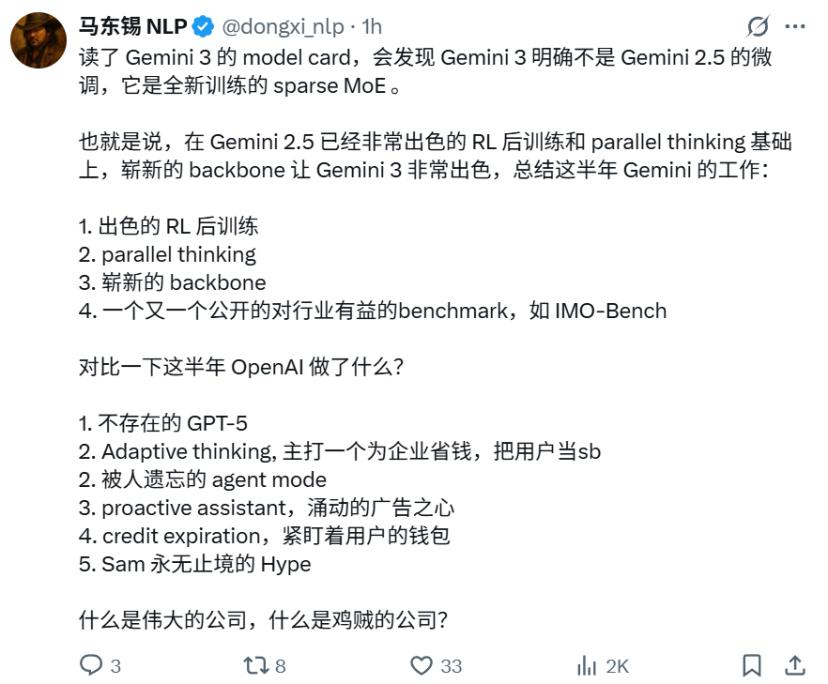
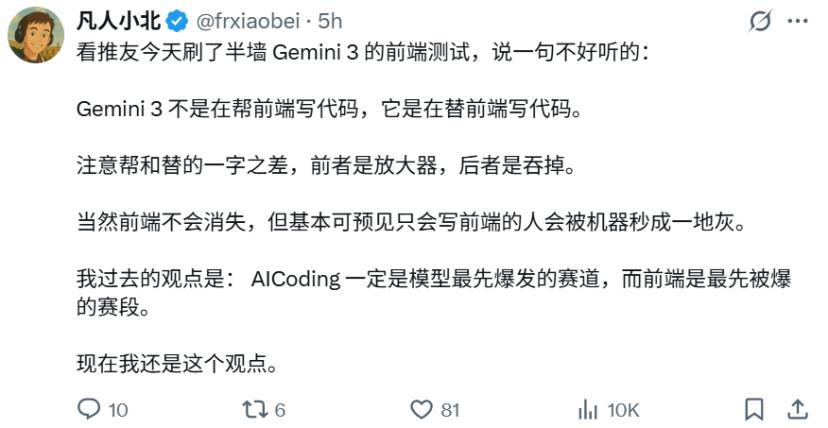
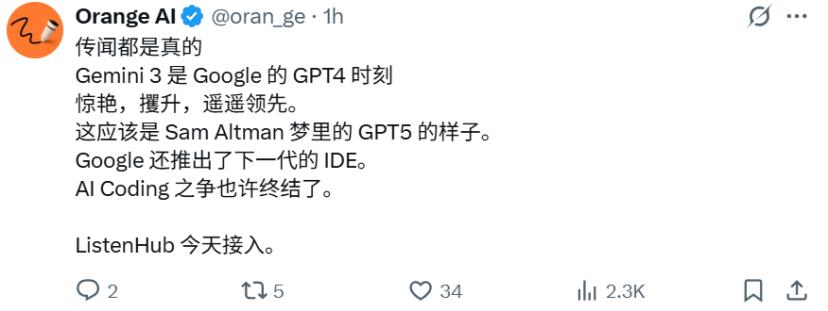
02
Although the release of Gemini 3 Pro was very low-key, in fact, Google had been warming up for Gemini 3 Pro for a long time.
At Google’s Q3 earnings call, CEO Sundar Pichai said: “Gemini 3 Pro will be released in 2025.” No specific date, no more details, but it kicked off a marketing drama in the tech industry.
Google kept sending signals to keep the entire AI community highly attentive, but always refused to give any definite release schedule.
Starting in October, various “accidental leaks” followed one after another. On October 23, a calendar began circulating, with an internal screenshot showing “Gemini 3 Pro Release” on November 12 going viral.
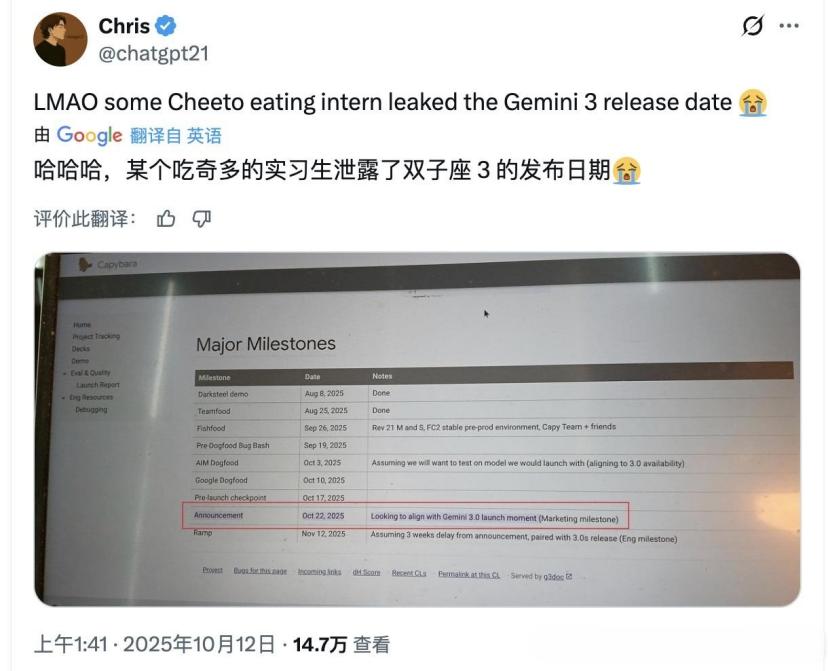
Sharp-eyed developers also found the phrase “gemini-3-pro-preview-11-2025” in the Vertex AI API documentation.

Soon after, all kinds of screenshots began appearing on Reddit and X. Some users claimed to have seen the new model in the Gemini Canvas tool, while others found unusual model identifiers in certain versions of the mobile app.
Then, the following test data image started circulating on social media.
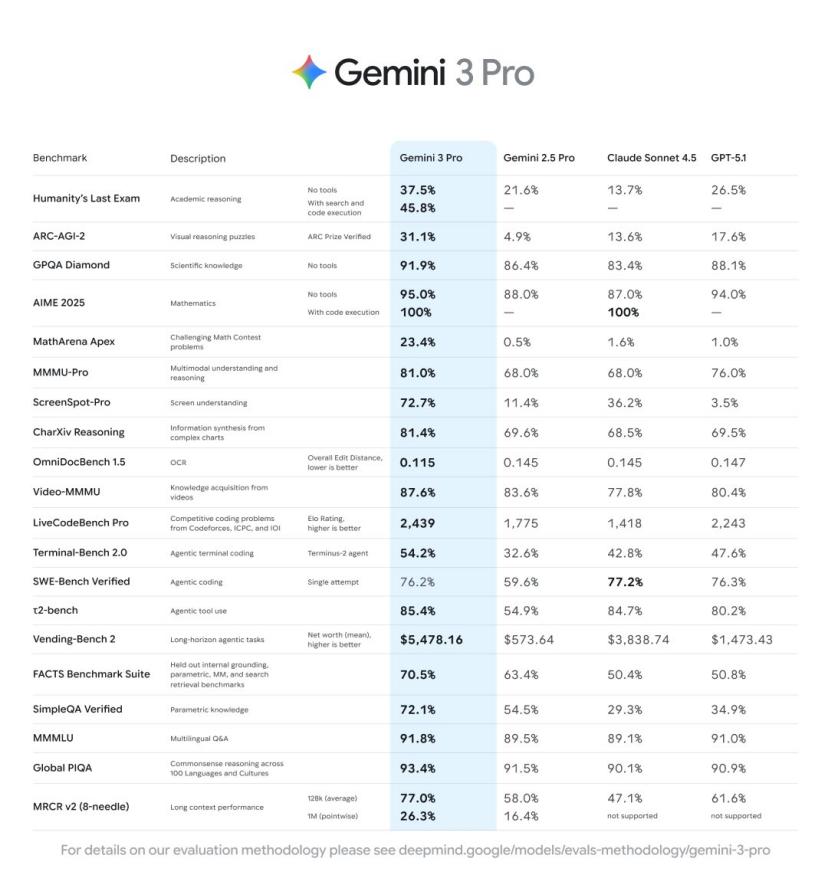
These “leaks” seemed accidental, but in fact formed a carefully orchestrated warm-up campaign.
Each leak showcased a core capability of Gemini 3 Pro at just the right time, and each discussion pushed expectations to new heights. The attitude of Google’s official accounts was intriguing—they would retweet community discussions, use phrases like “coming soon” to build anticipation, and even senior staff at Google AI Labs replied with two “thinking” emojis under tweets predicting the release date, but never gave an exact date.
After nearly a month of warm-up, Google finally served up the fresh Gemini 3 Pro. However, despite Gemini 3 Pro’s strong performance, Google’s update frequency is a bit worrying.
As early as March this year, Google released a preview version of Gemini 2.5 Pro, and later launched derivative preview versions such as Gemini 2.5 Flash. Until the launch of Gemini 3 Pro, there was no version number upgrade in the Gemini series.
But Google’s competitors will not wait for Gemini.
OpenAI launched GPT-5 on August 7, and further upgraded to GPT-5.1 on November 12. During this period, OpenAI also launched its own AI browser, Atlas, directly targeting Google’s core territory.
Anthropic’s iteration speed is even more intensive: Claude 3.7 Sonnet (the first hybrid reasoning model) was released on February 24, Claude Opus 4 and Sonnet 4 on May 22, Claude Opus 4.1 on August 5, Claude Sonnet 4.5 on September 29, and Claude Haiku 4.5 on October 15.
This series of offensives caught Google off guard, but so far, Google has held its ground.

03
The main reason Google took 8 months to update Gemini 3 Pro may have been personnel changes.
Around July to August 2025, Microsoft launched a fierce talent offensive against Google, successfully recruiting more than 20 core DeepMind experts and executives.
This included DeepMind’s Senior Director of Product, Dave Citron, who was responsible for landing its core AI products, and Gemini’s VP of Engineering, Amar Subramanya, one of the core engineering leads for Google’s most important model, Gemini.
On the other hand, the Google Nano Banana team once stated that after releasing Gemini 2.5 Pro, Google spent a long time struggling with the AI image generation field, which slowed down updates to the foundational model.
Google believes that only by overcoming three major challenges in image generation—Character Consistency, In-context Editing, and Text Rendering—can the foundational model perform better.
The Nano Banana team stated that the model not only needs to “draw well,” but more importantly, it must “understand human language” and “be controllable,” so that AI image generation can truly enter the stage of commercial implementation.
Looking back at Gemini 3 Pro, it is a qualified answer sheet, but in this fiercely competitive AI battlefield, just passing is no longer enough.
Since Google chose to hand in its paper at this moment, it must be ready to face the harshest graders—users and developers whose tastes have already been spoiled by competing products. In the coming months, it won’t be a contest of model parameters, but a battle of ecosystem integration capabilities. This elephant not only has to learn to dance, but also dance faster than everyone else.